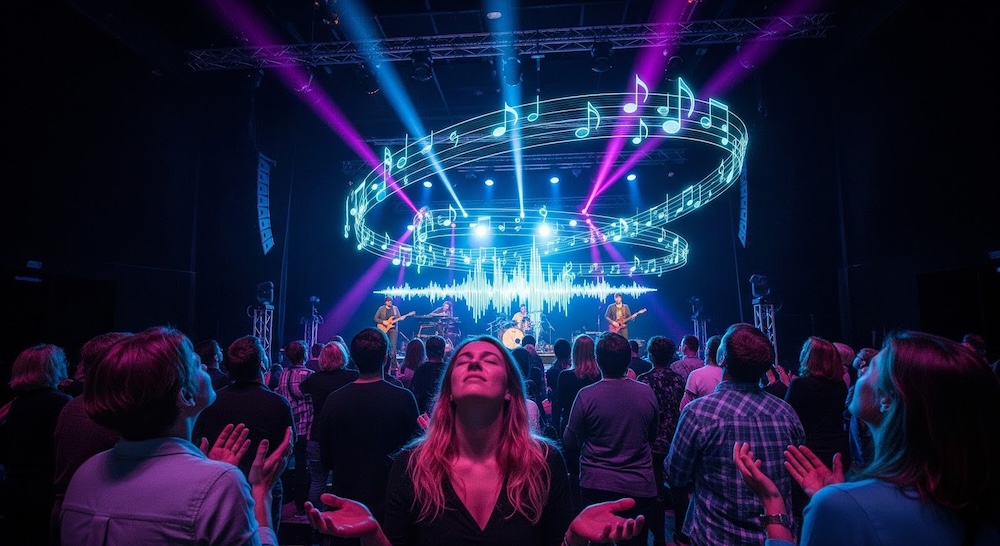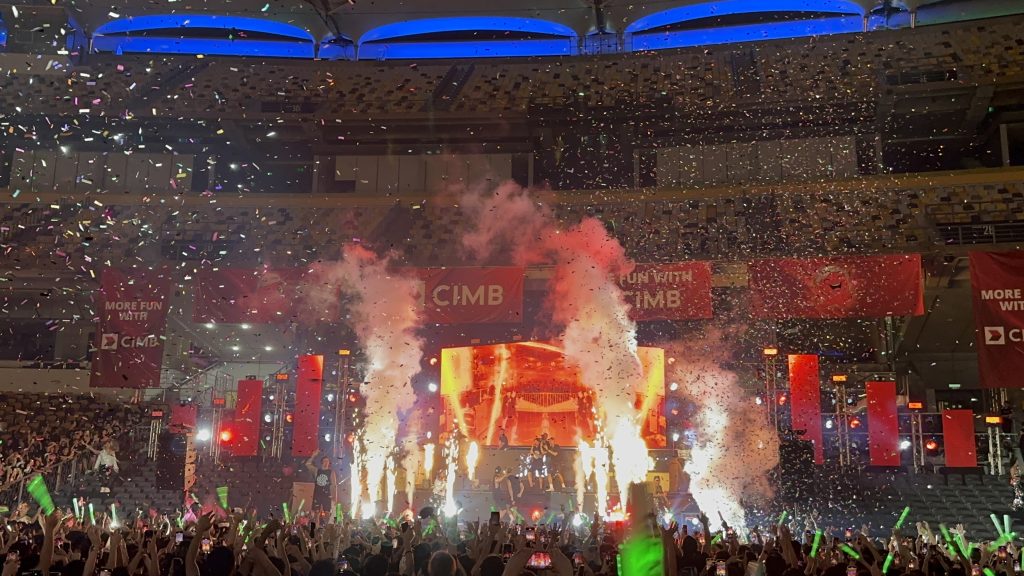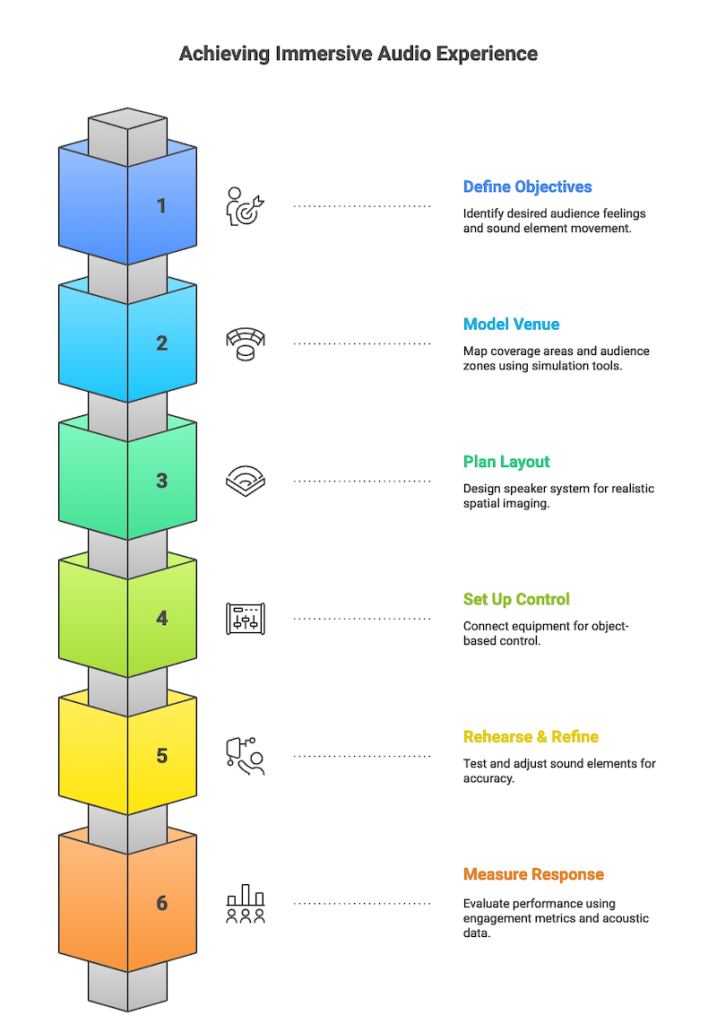Key Takeaways:
- LED screens transform static booths into immersive, motion-driven experiences that attract visitors instantly.
- Dynamic content—videos, 3D animations, and real-time visuals—enhances product storytelling and audience engagement.
- High-resolution LEDs improve clarity, highlight product features, and boost brand recall compared to traditional displays.
- Strategic placement, quality content, and interactive elements significantly increase dwell time and lead generation.
- Choosing the right LED type, optimising layout, and syncing LED visuals with physical products create a seamless, memorable display.
- Common mistakes like poor placement, low-quality resolution, and overly long loops can undermine the booth experience.
- A well-planned LED setup elevates product presentation, strengthens emotional connection, and supports deeper buyer interest.
Introduction
Exhibitions today demand attention within seconds of visitor entry. They thrive on memorable experiences in an age where attention spans are short, and competition for engagement is fierce.
Fortunately, LED screens offer a dynamic solution for visual impact and immersive storytelling. They transform static displays into vibrant, interactive environments that command attention and convey brand messages with striking clarity and motion.
Generally, LED screens are powerful tools for driving engagement. This is because they combine brightness, flexibility, and versatility when showcasing content that resonates emotionally and visually with audiences.
Their ability to display high-resolution images, video, and live feeds helps influence buyer decisions by making information more compelling and accessible.
This article aims to explore practical setup tips, innovative content ideas, effective layout, and planning strategies to help exhibitors harness the full potential of LED technology. And thus, create unforgettable exhibition experiences and support stories that static banners cannot tell.

Why LED Display Screens Transform Your Exhibition Booth Experience?
LED technology uses tiny light-emitting diodes to create bright, high-resolution visuals that can be easily shaped into various sizes and formats.
Unlike traditional static displays, LED screens allow for dynamic content—videos, animations, and real-time updates.
These underworkings make them perfect for booth design, allowing them to instantly grab attention and adapt to different messaging needs throughout the event.
In fact, their combination of visual motion, impressive scale, and vivid brightness appreciably elevates product presentation. Thus, making images and messages more engaging and lifelike.
This dynamism not only attracts more visitors but also helps communicate complex ideas quickly and clearly. Furthermore, in contrast to static print visuals, LED-driven displays deliver a more immersive experience that can better hold audience interest and create emotional connections. Thereby, influencing buyer decisions more effectively.
What Makes an LED an Immersive Display Solution?
Several key elements underpin an immersive display solution. For instance:
- Movement & animation: LED screens leverage dynamic animations and real-time rendering to create fluid motion. This draws viewers in and mimics lifelike scenes that boost engagement beyond static displays.
- High-resolution product storytelling: With ultra-high-definition visuals and refresh rates over 3840Hz, LEDs deliver sharp, detailed narratives. This highlights product features vividly, enhancing clarity for close-up viewing.
- Ability to simulate real environments: LEDs construct three-dimensional spaces or virtual rooms via curved, seamless setups. This transports visitors into realistic settings like historical scenes or product contexts.
- Multi-sensory elements: These displays integrate bright lighting, synchronised video, and interactive audio with sensors for touch or motion. Thereby, creating a full sensory wrap-around experience.
- Emotional impact on visitors: By evoking immersion through interactivity and vivid effects, they foster emotional connections and increase audience participation.
Check out these LED screen options available at Rental Supplier, Malaysia:

Why LED Screens Increase Visitor Engagement and Leads
LED screens increase visitor engagement and leads through different mechanisms, for instance:
- Psychology of motion visuals: Motion naturally grabs attention. This is because humans are wired to notice movement in their environment, which activates curiosity and early engagement.
- Longer dwell time: Dynamic and changing content often keeps visitors interested. Thus, encouraging them to spend more time at the booth.
- Better recall and brand association: Vivid, moving visuals create stronger memory encoding. This consequently helps visitors remember the brand and its message more effectively.
- Supports sales conversations and product explanations: LED screens visually complement dialogue by showcasing features clearly and engagingly.
Also read: Utilising Visual Display & LED Screens in Your Launch Strategy.
Steps to Create an Immersive Product Display with LED Screens
When designing a compelling exhibition booth, great product display ideas can make all the difference. LED screens offer unparalleled flexibility to create immersive, visually striking environments that bring products to life.
However, to leverage this technology effectively, it’s essential to approach your setup strategically.

Here are several steps to consider:
-
Define the Experience You Want Visitors to Feel
Start by clarifying your primary goal. For instance, do you want to demonstrate product features, highlight specific benefits, or create an inviting ambiance? Furthermore, align your LED content and storytelling with your overall brand theme. This will enable you to deliver a cohesive and engaging experience that resonates with your target audience.
-
Choose the Right Type of LED Display Screen
Select from various LED formats based on your booth size and traffic flow. For example, LED panel digital walls, curved LED screens, LED floor screens, hanging LED cubes or ribbons, and interactive kiosks. Each type serves different purposes—from large-scale visuals for impact to interactive touchpoints for engagement.
-
Plan Your Booth Layout Around the LED Experience
Always plan around the LED experience. For instance, position LED display walls for maximum visibility whilst avoiding blocked sightlines. Furthermore, design walk-through or focal-point areas that naturally guide visitors.
You can also seamlessly integrate product counters, demo spaces, and storage into your modular exhibition booth layout. Overall, a modular setup allows flexibility and ease in adapting your exhibition layout to different venues and goals.
Also read: 12 Benefits of Choosing a Modular Exhibition Booth for Your Next Home Design & Interior Exhibition.
-
Use High-Quality Visual Content
Incorporate 3D animations, lifestyle videos, interactive touch displays, before/after visuals, and product demo loops to create compelling storytelling sequences. This consequently grabs attention and communicates product value clearly.
-
Sync LED Content With Your Physical Products
Consider showing real-time demonstrations on your product display stand or product display rack. You can also coordinate colors, lighting, or movement between physical items and LED visuals to reinforce key features and create a unified presentation.
-
Incorporate Interactive Elements
Integrate touchscreens, digital catalogues, QR codes, motion sensors, or AR overlays to boost interactivity. This, in turn, increases visitor dwell time and lead engagement by turning passive viewing into active exploration.
-
Optimise Brightness, Colour & Viewing Angles
Adjust LED brightness to prevent glare and ensure clear visibility under indoor hall lighting. Furthermore, ensure content remains readable from both near and far distances, accommodating diverse viewing positions.
-
Use Sound Carefully (If Applicable)
Employ surround or directional speakers to enhance the experience without overwhelming visitors. It’s imperative to also know when sound adds immersion and when it risks causing distraction.
-
Plan for Seamless Technical Integration
Ensure power requirements are met with safe, organised cabling and cable management. Furthermore, employ reliable content playback systems, such as media servers or cloud-controlled platforms. Additionally, prepare backup plans to handle any technical failures smoothly.
Creative LED Screen Ideas for Product Displays
Here are some ideas to apply to each product display stand and product display rack.
- 360° rotating product environment: Showcase products from every angle with rotating visuals that highlight unique details.
- Virtual room simulations: Utilise LED screens to simulate real-life settings. These are perfect for home design, interior, and lifestyle brands to help customers visualise products in context.
- Product exploded views & animations: Break down your product on a product display rack visually to explain complex components and features via detailed animations.
- Customer testimonial videos: Build trust by playing authentic testimonials that share positive experiences and reinforce your brand’s value.
- “Behind the craftsmanship” storytelling loops: Leverage storytelling loops to immerse visitors in the making and craftsmanship behind your products, adding emotional depth.
- Real-time social media wall: Display live social media feeds to create interaction, showcase user-generated content, and enhance social proof.
Also read: How To Create an Unforgettable Experience With LED Screens in Events.
Common Mistakes to Avoid When Using LED Screens for Exhibition Booths
We are human and therefore prone to mistakes. The common mistakes with LED screens in exhibition booths often stem from rushed planning and a lack of technical expertise. Thus, leading to suboptimal setups that fail to engage visitors. Here are some examples:
- Overly long video loops: Long, repetitive videos can bore visitors and reduce engagement instead of capturing attention.
- Low-quality visuals or resolution mismatch: Poor image quality or mismatched resolution diminishes professionalism and clarity.
- Poor placement that blocks visitor flow: Placing screens where they obstruct movement can frustrate visitors and discourage booth exploration.
- Too much text: Crowding screens with excessive text overwhelms viewers and reduces message impact.
- Neglecting sound or brightness controls: Ignoring proper sound levels or brightness adjustments can distract visitors or make content hard to see.
Conclusion
LED screens dramatically elevate exhibition storytelling by transforming static displays into dynamic, immersive experiences that capture attention and deepen audience engagement. Unlike traditional panels, they enable fluid content rotation for product demos or even real-time social feeds.
Consequently, brands can easily adapt narratives instantly for seasonal themes or visitor polls. Thereby, fostering emotional connections and longer dwell times. Furthermore, their versatility not only boosts recall and participation but also supports multilingual accessibility and AR overlays.
For businesses looking to stand out and create lasting impressions, integrating LED setups into their booths is a powerful way to enhance product presentation and influence buyer decisions.
Explore our LED-integrated lighting system rentals for your exhibition booth with Rental Supplier and bring your next event to life!










